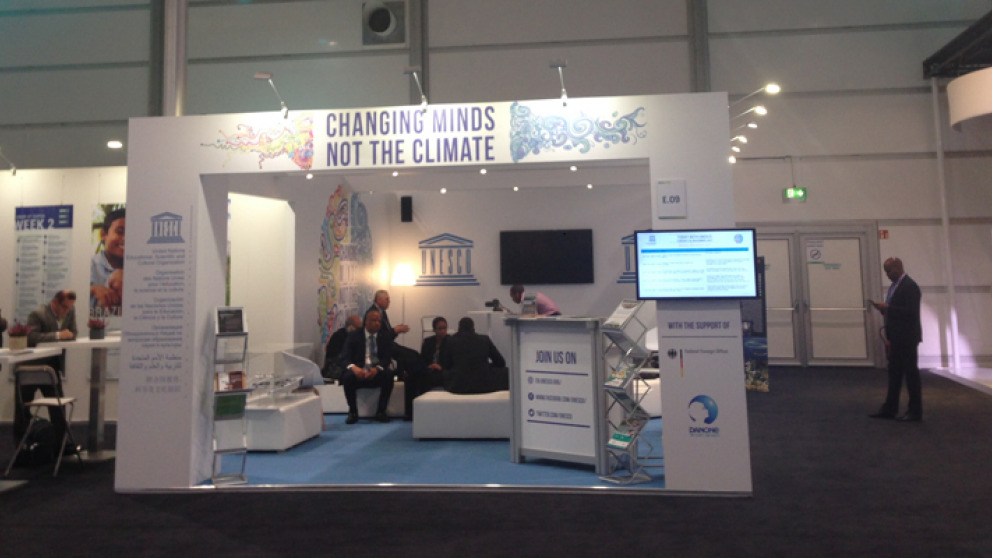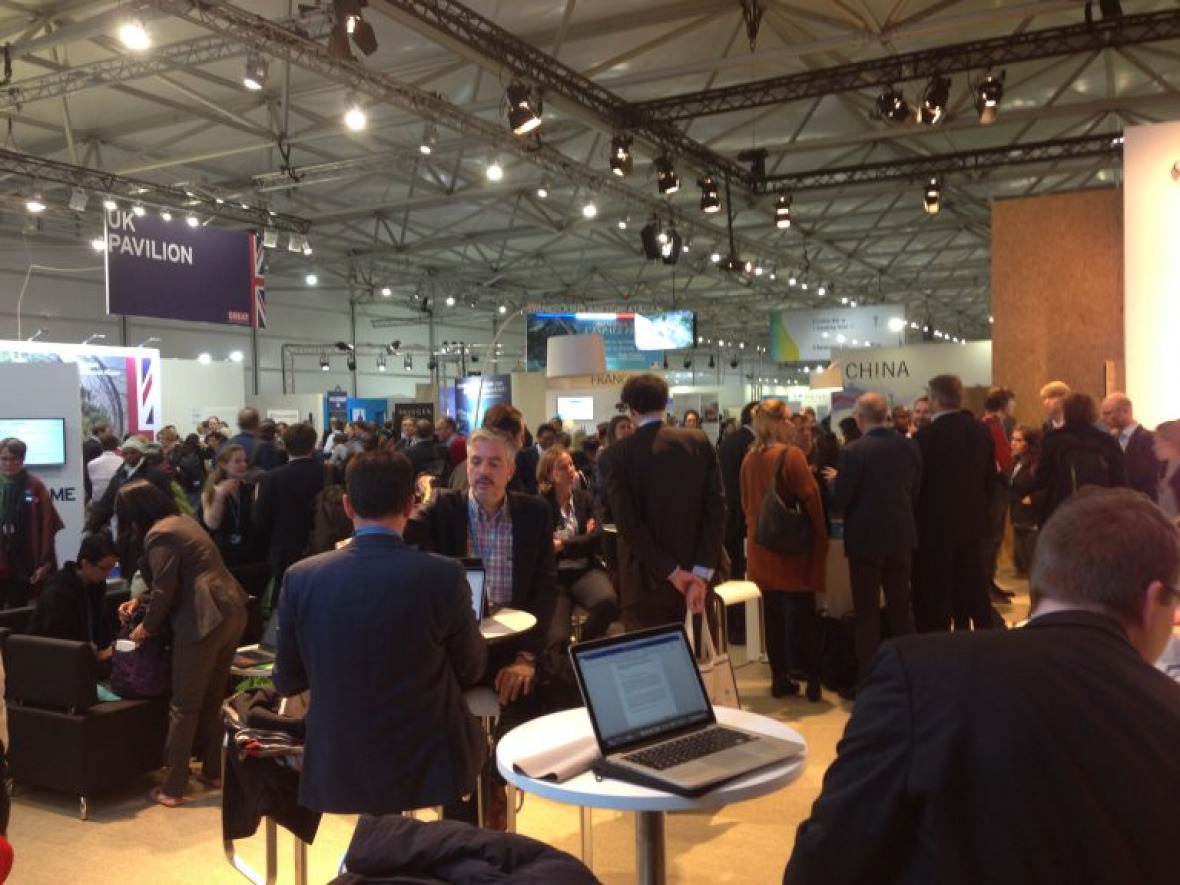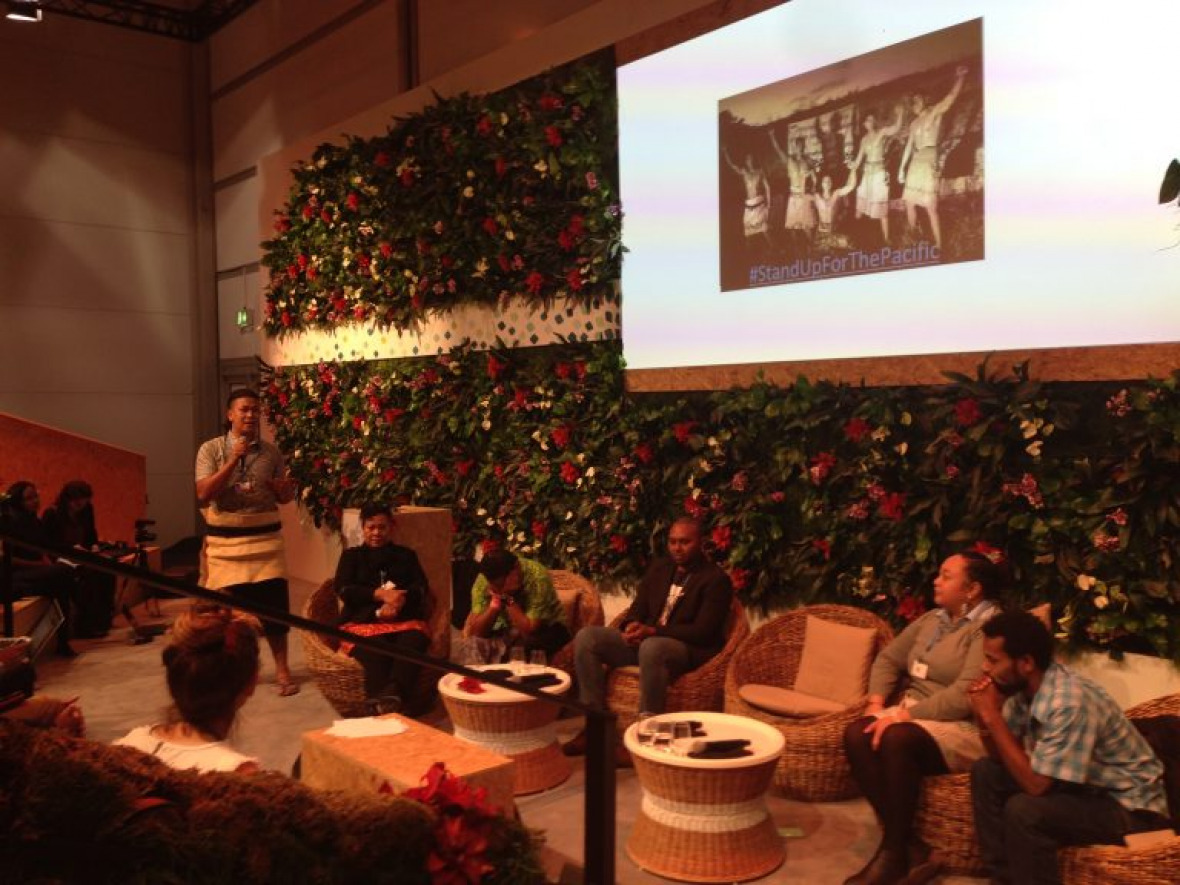On the culture of untapped potential
05.12.2017

Last week I attended the UN Climate Change Conference COP23 in Bonn. After having hosted an interactive side-event at the intersessional negotiation in May 2017, this was my first visit to an annual UNFCCC COP. I attended the conference without any concrete expectations and was mainly interested in observing the communication and working culture at this huge and important event. My conference pass granted me access to the so-called “Bonn Zone”, where stands and side events are hosted by the various parties to the conference, non-governmental stakeholders and the UNFCCC secretariat, but not to the negotiations of the party delegations, which are held separately. My impressions are limited therefore to the Bonn Zone and I would like to stress that these observations are of course purely subjective.
The setting and atmosphere
My immediate impression was that I had arrived at some kind of “happening” or “tourism fair”. No matter which way I turned, I spied LCD displays, sophisticated equipment, eye-catching giveaways, and elaborately designed objects. Many countries chose to use their pavilions to promote their natural and cultural attractions (e.g. Thailand), or tried to woo visitors with technological gimmicks and fashion (e.g. India). I sensed an atmosphere of entertainment and consumption that I had not anticipated and I felt a strong sense of alienation and intuitive resistance against this atmosphere and its dynamics.

At the side events, panels of experts seated at the front of the room delivered screen-assisted presentations or presentation-like statements in response to pre-formulated questions. The panels were made up almost entirely of men (I would estimate that 80-90% of the panelists were male) and were not especially culturally diverse. The panelists presented pre-formulated (and usually well-familiar) thoughts and findings side-by-side. In none of the side events that I attended, did I witness any kind of vivid and open interaction among the panelists that could have allowed for an in-depth exploration of a topic or the emergence of innovative thoughts and ideas. In several panels quite some time was reserved for questions from the audience to which one panelist at a time responded.
I am aware that there were also more creative side events, like the one the IASS organized the week before on climate change in vulnerable regions, together with Nepal and Fiji, but it is clear that these are few and far between.
The people
I soon grew bored of the panels. I had essentially heard or read these thoughts and positions before and my mind got tired from being in a receptive mode all the time. I found myself itching to take out my computer and work on some urgent e-mails, and when I looked around, I realized that at least half (and often significantly more) of the people in the audience were working on their laptops or mobile devices. I made the effort to observe carefully in several side events and saw that most of the people were either surfing on the internet or answering e-mails or working on something not related to the panel as far as I could tell. And this does not surprise me. How can we aspire to think and work together as long as everyone is sitting in long rows and not looking at each other?

Walking around the venue I met many familiar faces and I started asking everybody why he or she was at the conference. The responses that I got suggest that most people were there to meet their colleagues and see how they and their projects were going and to gauge the prospects for future collaboration. When I asked how they understood their specific contribution and the benefit that resulted from their presence, I did not really get any concrete answers. Observing and listening to the conversations of people around me, I sensed a rather superficial spirit of pragmatic networking and “seeing and being seen”. The event’s “entertainment-character” also became very apparent. I even saw people posing to have their photograph taken alongside young girls in traditional Fijian costume.
My fundamental doubts
I wondered: Can this really be what this huge event is about? Why are we all here? What is the real purpose and contribution of this gathering? Its potential is, in principle, huge. From all over the world so many people with relevant expertise, influence and passion come together – and this is how we make use of it? Hearing repeatedly what we already largely know, presenting ourselves and doing some superficial networking embedded in a narcotic cloud of entertainment?
I feel sad, frustrated and even angry about what I experienced as the dominant culture at the COP. Where is the space to really listen to each other and reflect at a fundamental level? And why do we not use this huge potential to really engage with each other and generate new thoughts and perspectives together? Frankly speaking, I wonder: Can these conferences really make a meaningful contribution to a better way of addressing the challenges of climate change? Or are they just another manifestation of the systemic structures and logics that have generated our problems in the first place?
Some hope for the future
Despite my in many ways disenchanting experiences, I have also returned with important impulses of hope. Many of the people I talked to at the COP shared my frustration and expressed a deep hunger for a different way of working and becoming active together. Surprisingly many people said that it was time to no longer focus on sharing knowledge but rather to “engage the hearts of people”. Also, the presidency of Fiji introduced the concept of Talanoa, a story-telling based form of dialog; and the beautifully designed “Talanoa Space” in the Bonn Zone was the very notable interactive exception from the frontal formats of the other panels and was deeply appreciated by many participants.

If we really care about the wellbeing of the Earth, including all human and non-human life as much as we say we do, I am convinced that a radical shift is needed in the way we are working and relating to each other – a shift toward a mode of cooperation that integrates the many perspectives and forms of expertise that are present at meetings like this. It is time to dare to introduce many more innovative and interactive workshop-like formats into the setting of the COP conferences that allow for real purpose-driven exchange and co-creation of future pathways. There is a lot of fertile ground among the participants and there is so much expertise about engaging, participative and co-creative modes of working. Why do we miss the huge potential of the COPs by sticking to our habituated, disconnected, and superficial ways of interacting? Are we so afraid to leave our comfort zone and learn to really listen and relate deeply to each other?
I hope that we will mobilize the courage to overcome the structural barriers and transform our habituated modes of working together. Both are rooted deeply in our minds and in the mental and institutional structures we have created, but I am certain that even these can be transformed. As the UNESCO indicated stated so plainly on their pavilion, the challenge lies in “changing minds, not the climate”. Otherwise it is painful for me to witness this enormous waste of precious collective potential.
Also interesting:
Media
COP23: Interview with Thomas Bruhn from IASS Potsdam

